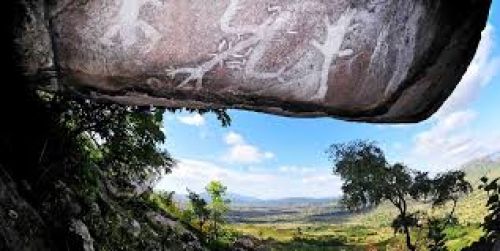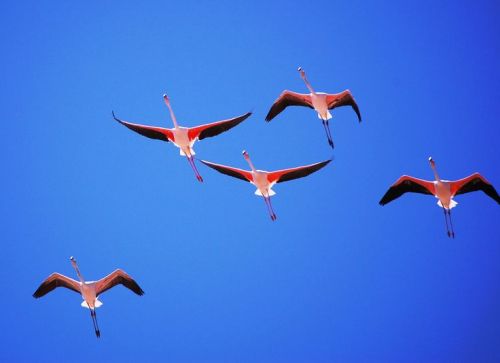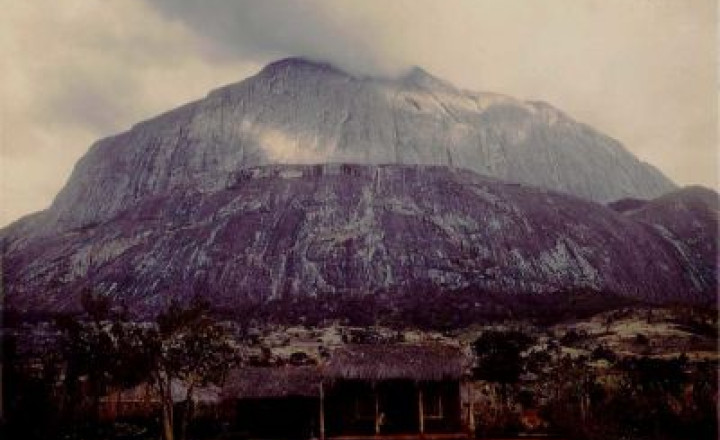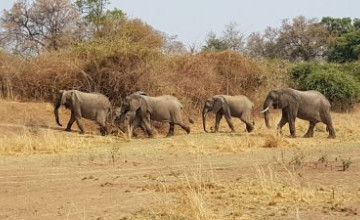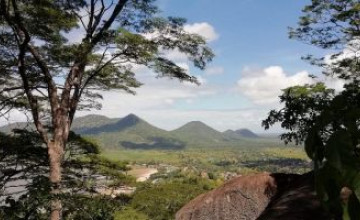Chiradzulu Mountain is located in the Shire Highlands of Malawi, approximately 20 km to the north-east of Blantyre, Malawi's main commercial centre. The administrative district of Chiradzulu in southern Malawi was named after this mountain. Chiradzulu Mountain rises to a peak of 1,773m above sea level and is the third highest mountain peak in southern Malawi, after Mulanje Mountain, whose famous Sapitwa peak rises to 3,002m above sea level, and Zomba Mountain, which rises to 2,085m above sea level at its peak.
Chiradzulu Mountain Forest Reserve was established in 1924, and covers an area of 774 hectares.
For more information, click here.
The Chongoni Forest Reserve lies between the M1 road and the dirt road that goes past the Dedza Pottery. It can be approached from the M1 through the turnoff to the Malawi College of Forestry and Wildlife, or from the north on the dirt road from Linthipe or from the south by the Dedza Pottery dirt road.
There are many paths through the forest that are suitable for rambling and mountain biking. One spectacular walk is to the summit of Chencherere Hill, a steep granite outcrop to the north of the Kazela Lodge.
For more information, click here.
Chongoni Rock Art Area is located in the Central Region, near Dezda. There are 127 sites (126 km2) in the forested hills of the Malawi plateau with depictions of rock art and paintings of the farmer community of the Late Stone Age and the Iron Age period. This ancient record of the cultural history is fashionable even now.
The rock arts are in granite formations and consist of art depictions attributed to the hunter gatherer community of BaTwa who lived here during the stone age period, and of the farming community of Chewa who are traced to the Iron Age period. In view of this cultural importance, the area was inscribed as a UNESCO World Heritage Site in 2006 under Criteria III for the rich cultural traditions of rock art and Criteria VI for its continued link to the present society.
Dedza Mountain is a mountain in central Malawi. It is located in Dedza District, just north of the town of Dedza. Dedza Mountain's peak reaches 2198 meters elevation. Dedza Mountain Forest Reserve was established in 1926, and covers an area of 2917 ha.. Plantations of introduced pine trees cover much of the mountain, but there are remnant patches of native montane evergreen forest near the summit, and riparian forests in ravines. The native forests are home to numerous epiphytic orchids and other species.
The Dedza-Salima Forest Reserve runs in a north-south strip thorough the western part of Dedza and lies between the Thuma Forest Reserve in the north and the Mua-Livulezi Forest Reserve in the south. It covers an area of 32,000ha (320 sq km).
Numbers of animals in the Reserve are low because of the lack of enforcement action over the years. However, the Wildlife Action Group, a German based charity, has recently taken over the management and hopes to create a stronghold for the African elephant and other wildlife through conservation work.
For more information, click here.
Dzalanyama Forest Reserve, 60 km south-west of Lilongwe, is almost entirely covered with Brachystegia–Julbernardia woodland. It forms part of the Dzalanyama Range, a series of rocky hills running north-west–south-east along the border with Mozambique, which marks the watershed between Lake Malawi and the Zambezi river system. The eastern side of the reserve is relatively flat, at about 1,300 m. The hills to the west rise above 1,500 m with several peaks over 1,600 m. A few small patches (c.75 ha) of mid-altitude forest occur on the highest ridge near Kasito Rock. Dambos occur along many of the drainage lines, breaking the continuity of the woodland cover. A Pinus–Eucalyptus plantation has been established in the reserve and covers about 5% of the land area. On the Mozambique side, the woodland extends uninterrupted over a much larger area with little sign of human settlement evident.
For more information, click here.
Kasungu National Park is a national park in Malawi. It is located west of Kasungu, about 175 km north of Lilongwe, extending along the Zambian border. Kasungu National Park, established in 1970, is the second largest in Malawi at 2,316 km2 and lying at approximately 1,000m above sea level on average. It is located in the Central Region approximately 165 km north of Lilongwe.
Most years the park is closed during March, during the wet season. The park is warm from the months of September to May and cooler from June to August. During the summer months a large variety of birds migrate to the park and bird watching is common between June and September.
Kasungu is Malawi's second largest National Park after Nyika, and is located in the central region of the country. The landscape covers 2 000km (1243 miles) and consists of woodland and bush, grassland and rolling hills, with a small lake and a wide marshy river course. Hippos are established at the lake and an estimated 300 Elephant remain after serious poaching in the past.
Elephants (120), Buffalo, Zebra, Leopard, Jackal, Serval and antelope are all present here, as well as a wide variety of birds. Due to recent efforts, animal stocks and the accessibility of the Park have been improved, and it can now be toured in regular vehicles. In july 2022 Kasungu will receive an aditional 250 elephants , 80 buffalos, 120 impalas and other small animals from Liwonde National Park.
There is a lodge in the Park offering game drives and guided walks. Kasungu is only 160km (100 miles) from Lilongwe. The park also has many important Iron Age archaeological sites. The Park is Generally closed in March, as it is inaccessible due to the wet weather.
For more info click here
Lake Chilwa is the second-largest lake in Malawi after Lake Malawi. It is in eastern Zomba District, near the border with Mozambique. Approximately 60 km long and 40 km wide, the lake is surrounded by extensive wetlands. There is a large island in the middle of the lake called Chisi Island. The lake has no outlet, and the level of water is greatly affected by seasonal rains and summer evaporation. In 1968, the lake disappeared during exceptionally dry weather.
The Danish International Development Agency donated funds to ensure preservation of the lake and its wetlands, to improve the production of rice and other crops, and to help safeguard the habitat of the flora and fauna of the lake region.
The Lake Chilwa Basin Climate Change Adaption Programme (LCBCCAP) has been introduced to conserve the sensitive area, which is not only an important wetland for local fauna, but also a major source for fish products in the region.
Lake Chilwa was designated Malawi’s first Ramsar Site, Wetland of International Importance in 1997, and supports massive populations of important bird species including flamingos, pelicans and the localised black egret, while the baobabs on Chisi Island host the likes of trumpeter hornbill and various snake eagles.
Fore more info click here
Lengwe National Park is a national park in Malawi located near the town of Chikwawa and about 40 miles southwest of Blantyre. Lengwe's topography is unusual for Malawi and consists of open deciduous forests and dense thickets. It is the home of the reclusive Nyala antelope.
Situated in the south, 75km (47 miles) from Blantyre, this is the most southern of all the parks. This area is ideal for sugar cane production and much of the surrounding area has been taken over by plantations.
The Park has wonderful scenery; the waterholes are great places to spend some time bird watching and also taking walks in the bush. The park has large herds of Nyala as well as many smaller antelope. Baboons, Leopard and Hyena also reside here but are seen less often. There is only one place to stay in the reserve Nyala Safari Lodge.
For more information, click here.





